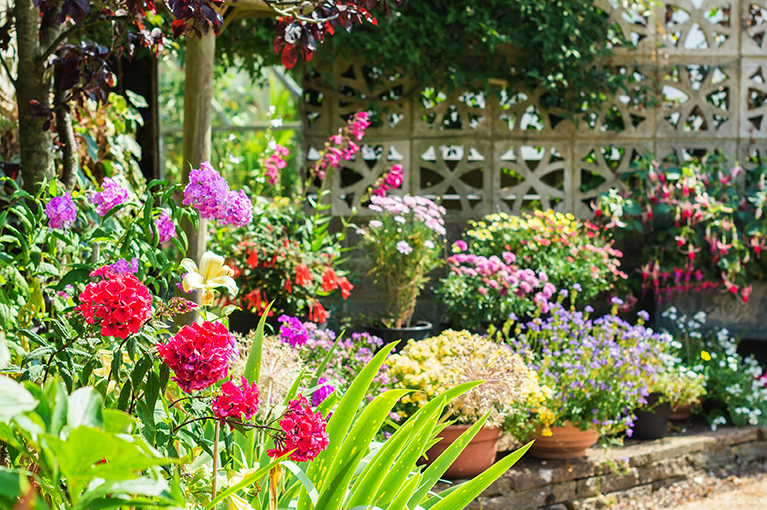If you’re keen to give water gardening a go (that is, growing aquatic plants), a fish pond can be a great place to start. Before you begin, it’s worth taking the time to plan out your fish pond – so that both your plants and fish can thrive.
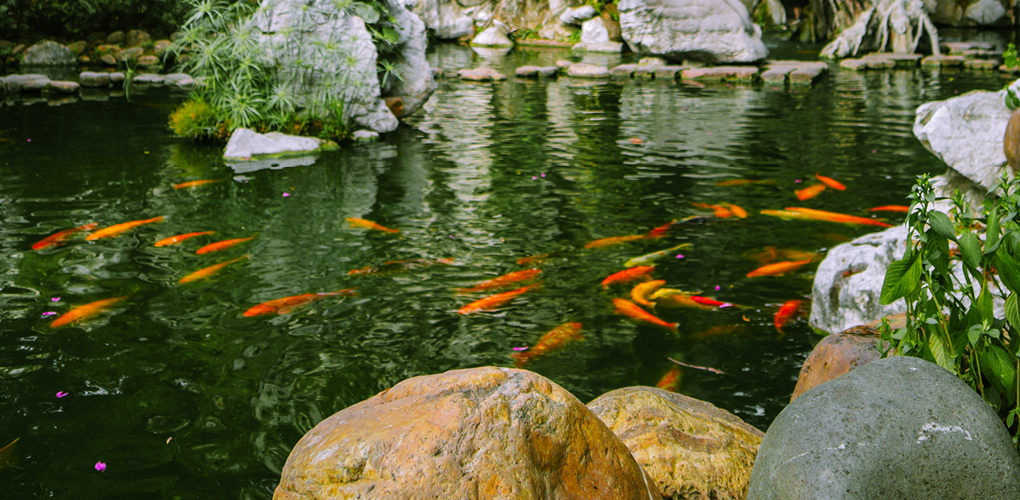
How do I start a fish pond?
You have quite a few options when it comes to designing your fish pond. For example, you can use:
- a large bowl or container
- a formal shape e.g. square, rectangle or octagon
- a natural or informal shape, such as kidney or creek bed
Whichever one you choose, it’s important to have a good depth of water (no less than 400mm) to keep the water temperature stable. Shallow water warms up easily and can prompt excessive algae growth, clogging the water feature and threatening fish health.
It’s also a good idea to add a small pump to keep the water fresh and help prevent mosquitoes from breeding. Moving water also looks attractive, creating a pleasant atmosphere. If you don’t want to worry about cables, look for a solar-powered pump.
What plants are best for a fish pond?
Aquatic plants are an essential part of pond life. These can be potted plants or floating varieties. It’s important to have around 75% plant cover to help prevent algae, keep the temperature of the water more stable, and give fish plenty of shelter and protection from birds.
Look for quirky floating plants like water lettuce, the nardoo (which is like a four-leafed clover) and duckweed.
Water lilies come in many colours, and the leaf shape is like a circular flat paddle floating on the surface. These are best kept in low, wide pots set on the bottom of the pond. You can also create ledges and shelves to house potted water plants.
Other water plants for pots are water iris with beautiful seasonal flowers, mare’s tail, Japanese variegated sweet flag, taro (for height), and pickerel plant with purple flower spikes.

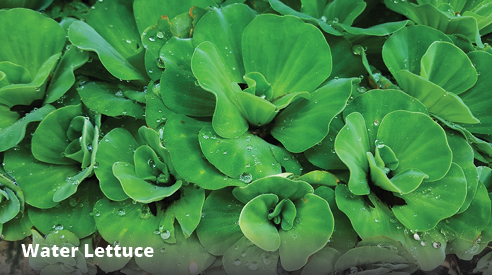


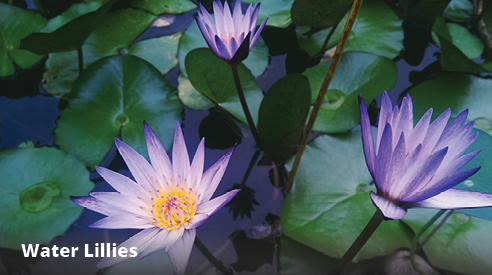
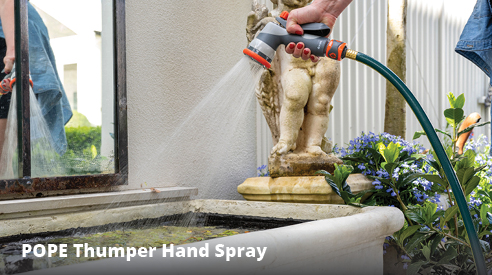


How do I maintain my fish pond?
Pond plants filter sediments and take up nutrients. Overfeeding fish or leaving too much decaying matter in the fish pond can make the environment irresistible to algae. So it’s important to remove fallen leaves from trees, as well as the dead leaves from your water plants.
With some simple, regular maintenance, you can keep your fish pond healthy with clear water, abundant plant life and thriving fish.

Pope’s DIY tip
Use a barbed fitting with a clamp to connect the hose to your pond pump and filter.
You have quite a few options when it comes to designing your fish pond. For example, you can use:
- a large bowl or container
- a formal shape e.g. square, rectangle or octagon
- a natural or informal shape, such as kidney or creek bed
Whichever one you choose, it’s important to have a good depth of water (no less than 400mm) to keep the water temperature stable. Shallow water warms up easily and can prompt excessive algae growth, clogging the water feature and threatening fish health.
It’s also a good idea to add a small pump to keep the water fresh and help prevent mosquitoes from breeding. Moving water also looks attractive, creating a pleasant atmosphere. If you don’t want to worry about cables, look for a solar-powered pump.
Aquatic plants are an essential part of pond life. These can be potted plants or floating varieties. It’s important to have around 75% plant cover to help prevent algae, keep the temperature of the water more stable, and give fish plenty of shelter and protection from birds.
Look for quirky floating plants like water lettuce, the nardoo (which is like a four-leafed clover) and duckweed.
Water lilies come in many colours, and the leaf shape is like a circular flat paddle floating on the surface. These are best kept in low, wide pots set on the bottom of the pond. You can also create ledges and shelves to house potted water plants.
Other water plants for pots are water iris with beautiful seasonal flowers, mare’s tail, Japanese variegated sweet flag, taro (for height), and pickerel plant with purple flower spikes.








How do I maintain my fish pond?
Pond plants filter sediments and take up nutrients. Overfeeding fish or leaving too much decaying matter in the fish pond can make the environment irresistible to algae. So it’s important to remove fallen leaves from trees, as well as the dead leaves from your water plants.
With some simple, regular maintenance, you can keep your fish pond healthy with clear water, abundant plant life and thriving fish.

Pope’s DIY tip
Use a barbed fitting with a clamp to connect the hose to your pond pump and filter.
Pond plants filter sediments and take up nutrients. Overfeeding fish or leaving too much decaying matter in the fish pond can make the environment irresistible to algae. So it’s important to remove fallen leaves from trees, as well as the dead leaves from your water plants.
With some simple, regular maintenance, you can keep your fish pond healthy with clear water, abundant plant life and thriving fish.

Pope’s DIY tip
Use a barbed fitting with a clamp to connect the hose to your pond pump and filter.










